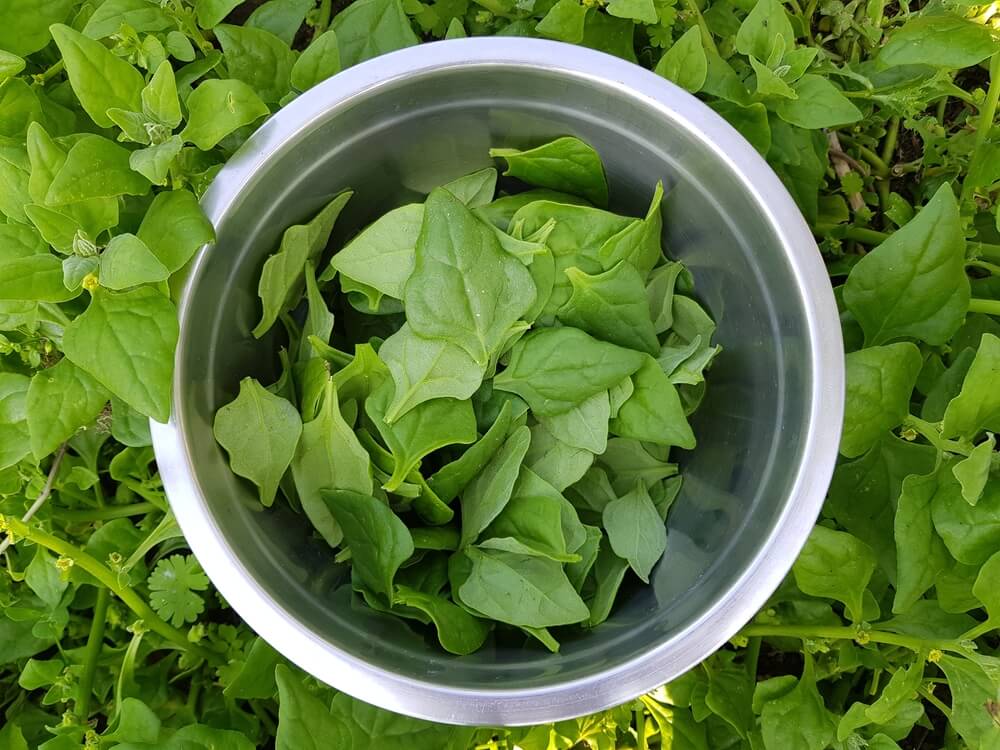18 Delicious Edible Groundcover Crops That Are Way More Beneficial Than Turfgrass!
Welcome! This article contains affiliate links, meaning I get a commission if you decide to make a purchase through my links, at no extra cost to you.
Tired of staring at boring grass that does nothing but demand mowing? Your lawn might look pretty, but when’s the last time you made dinner from your yard? It’s time to ditch the decorative turf and plant edible groundcover crops that work twice as hard, covering ground AND filling your plate with fresh, homegrown flavors.
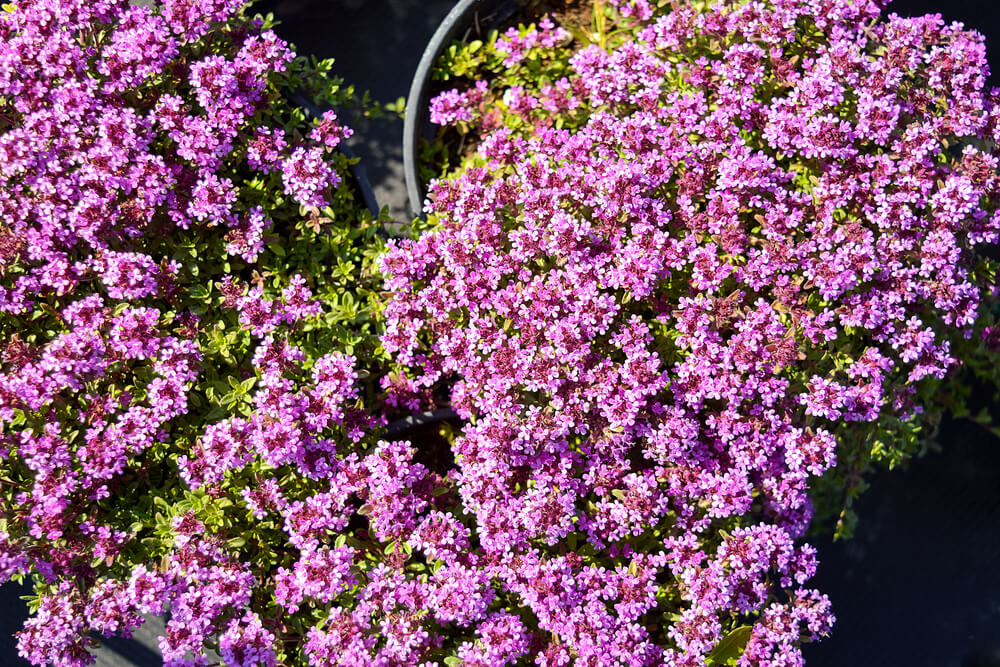
Sound intriguing?
Then let’s grow some epic and edible groundcovers!
Best Groundcover Crops That Are Safe To Eat In Your Backyard
Here are the most reliable and delicious groundcover plants that will transform your landscape into an edible paradise.
1. Sweet Potato (Ipomoea batatas)
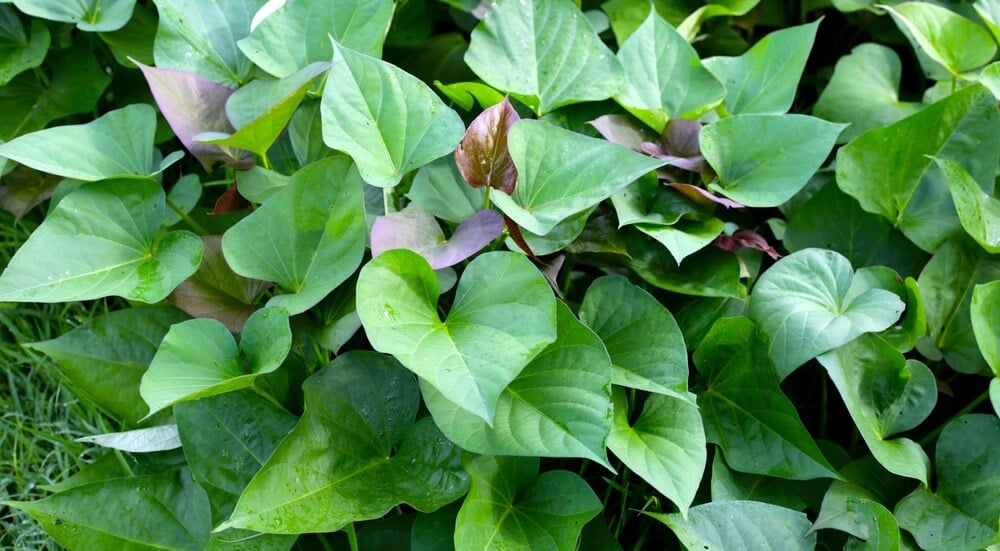
This vigorous vine doubles as a backyard salad bar. It also has delicious leaves that taste remarkably like spinach. The dense foliage smothers weeds while providing you with nutritious greens throughout the entire season. Plus, those coveted tubers underground are the ultimate bonus.
- USDA Grow Zones: Grown as a perennial in Zones 9 through 11, annual elsewhere.
- Edible Parts: Leaves and tubers.
- Bloom Color / Form: Lavender to pale purple, morning-glory type flowers.
- Wildlife Benefits: Dense foliage provides ground cover. Flowers attract pollinators.
Harvest young sweet potato leaves by pinching the growing tips. Doing so encourages the potato vine to spread more vigorously. It also provides you with the tenderest greens.
2. Prostrate Rosemary (Salvia rosmarinus ‘prostratus’)
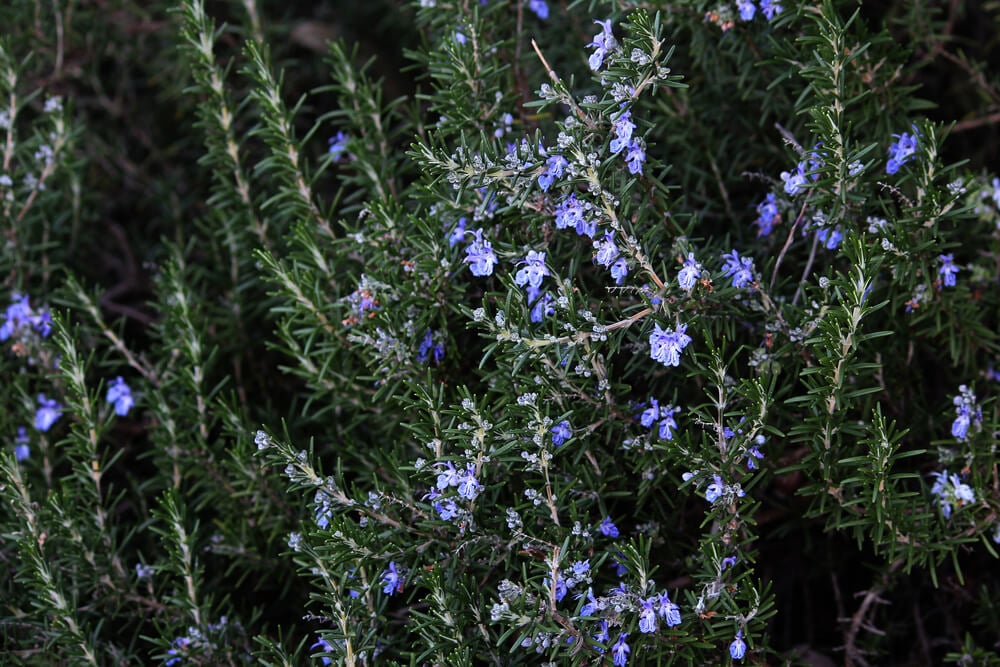
Think of this as your pizza herb with commitment issues. It hugs the ground instead of standing tall, creating an aromatic evergreen carpet that perfumes the air throughout the year. Bees absolutely adore the blue flowers, and you’ll never run out of fresh rosemary for roasting.
- USDA Grow Zones: 8 through 10.
- Edible Parts: Leaves.
- Bloom Color / Form: Blue to lavender, small tubular flowers.
- Wildlife Benefits: Nectar-rich flowers attract a variety of pollinators, including bees and butterflies.
The key to prostrate rosemary success is excellent drainage. Plant it on a slope or in raised areas where water won’t pool around those precious roots.
Read More – 21 Delicious And Edible Fruit Shrubs You Can Easily Grow In Your Backyard!
3. White/Red Clover (Trifolium repens, T. pratense)
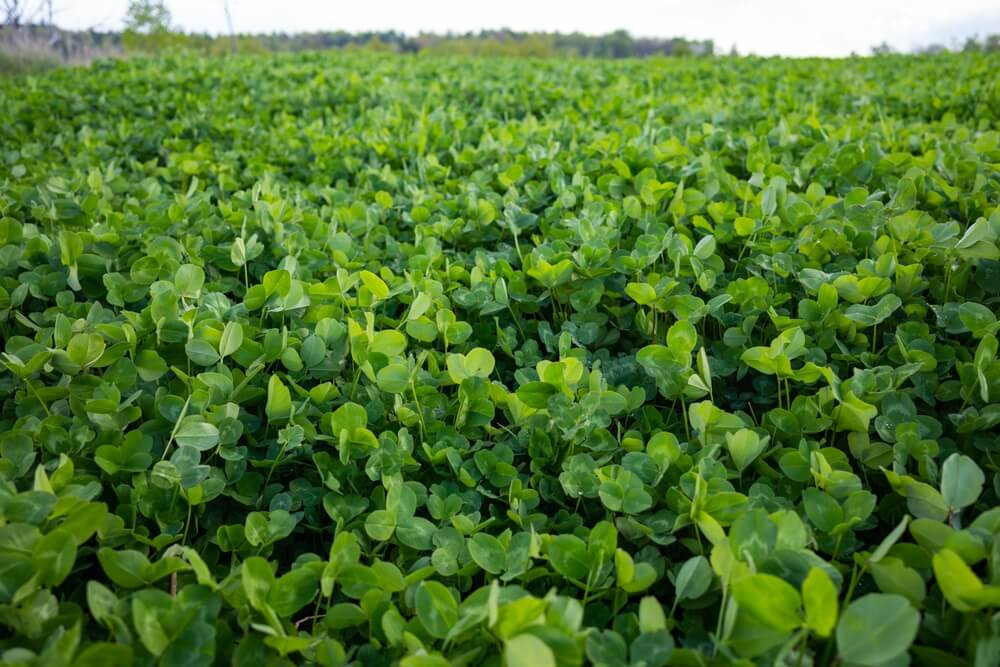
Clover creates a soft, nitrogen-fixing carpet that helps improve your garden soil while providing essential nutrients for your plants. It’s like nature’s perfect lawn alternative. Both the honey-sweet flowers and tender leaves are edible, and pollinators treat it like an all-you-can-eat buffet.
- USDA Grow Zones: 3 through 9.
- Edible Parts: Leaves and flowers (fresh or tea).
- Bloom Color / Form: White, pink, or red, ball-shaped clusters.
- Wildlife Benefits: Fixes nitrogen in soil. Flowers attract bees and pollinators.
Clover flowers make excellent natural “bubble tea” pearls when dried. Just steep them in hot water for a delightfully sweet, honey-flavored drink.
4. Sweet Violets (Viola odorata)
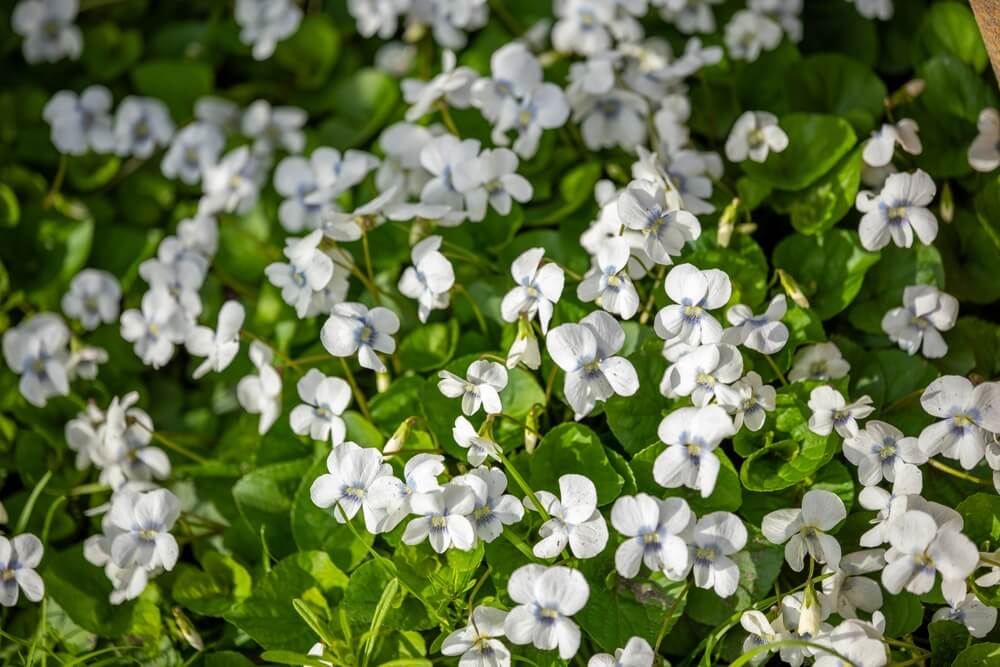
Sweet violets are lovely, spreading plants that offer a delightful surprise in the spring. The delicate purple flowers also taste as beautiful as they look. They’re perfect for garnishing salads or making floral jellies. The heart-shaped leaves add a subtle green touch to your plate, creating gentle drifts of color.
- USDA Grow Zones: 4 through 9.
- Edible Parts: Leaves and flowers.
- Bloom Color / Form: Purple, violet, or white, five-petaled flowers.
- Wildlife Benefits: Flowers attract early pollinators. Groundcover provides habitat for friendly garden bugs.
Did you know that certain edible flowers, like butterfly pea and some violets, can transform the color of liquid when steeped and mixed with lemon juice? They create a dazzling shift from vibrant blue or purple to a vivid pink, perfect for crafting eye-catching cocktails that will wow your guests at any gathering!
Read More – 23 Epic And Edible Perennials For Sustainable Home Gardens!
5. Purslane (Portulaca oleracea)
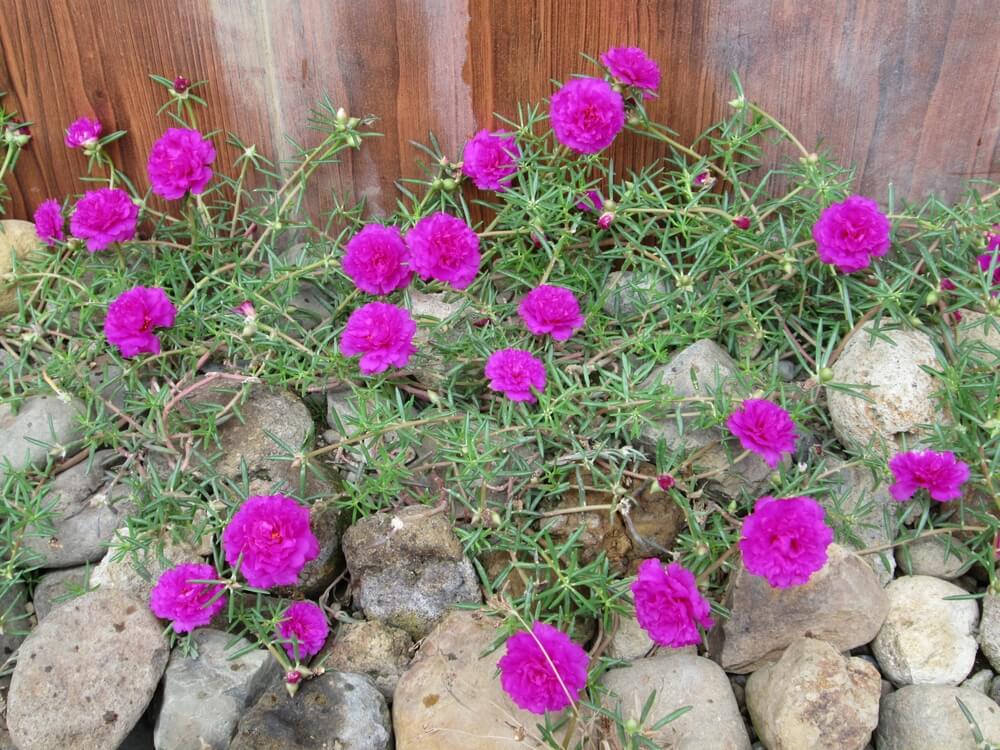
Don’t let anyone tell you this “weed” is useless. Purslane’s tasty leaves pack more omega-3s than most fish! They also have a tangy, lemony crunch that livens up any homemade salad. It thrives in poor, dry soil where other groundcovers surrender.
- USDA Grow Zones: 2 through 11 (grown as a warm-season annual).
- Edible Parts: Leaves and stems.
- Bloom Color / Form: Small yellow, five-petaled flowers.
- Wildlife Benefits: Flowers provide nectar and pollen for bees, which in turn support the pollination process.
The challenge with purslane is stopping it from taking over your entire yard and garden. But you might not care once you taste those crunchy, pickle-like stems in a homemade Greek salad.
6. Wintergreen (Gaultheria procumbens)
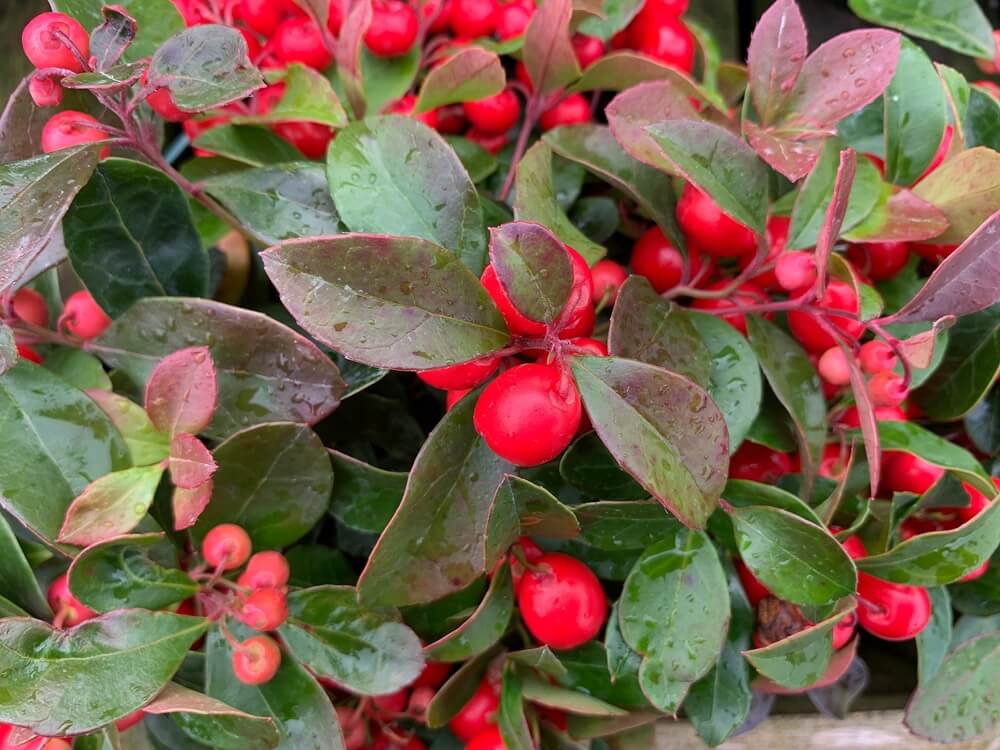
This evergreen overachiever provides year-round ground coverage. It also offers a natural supply of goodies, featuring minty leaves perfect for tea and bright red berries that taste like nature’s own wintergreen candy. It’s particularly magical carpeting shady woodland areas.
- USDA Grow Zones: 3 through 8.
- Edible Parts: Berries and leaves (used for tea).
- Bloom Color / Form: White to pale pink, bell-shaped flowers.
- Wildlife Benefits: Berries serve as a welcome food source for songbirds and small mammals. Evergreen cover helps protect the soil.
Wintergreen leaves contain natural methyl salicylate, the same compound found in aspirin, so that soothing tea isn’t just tasty, it may be therapeutic. (Enjoy sparingly if you’re sensitive to aspirin-like compounds.)
Read More – 17 Deliciously Edible Seed Plants For Growing In Your Backyard Or Food Forest!
7. Creeping Thyme (Thymus serpyllum/praecox)
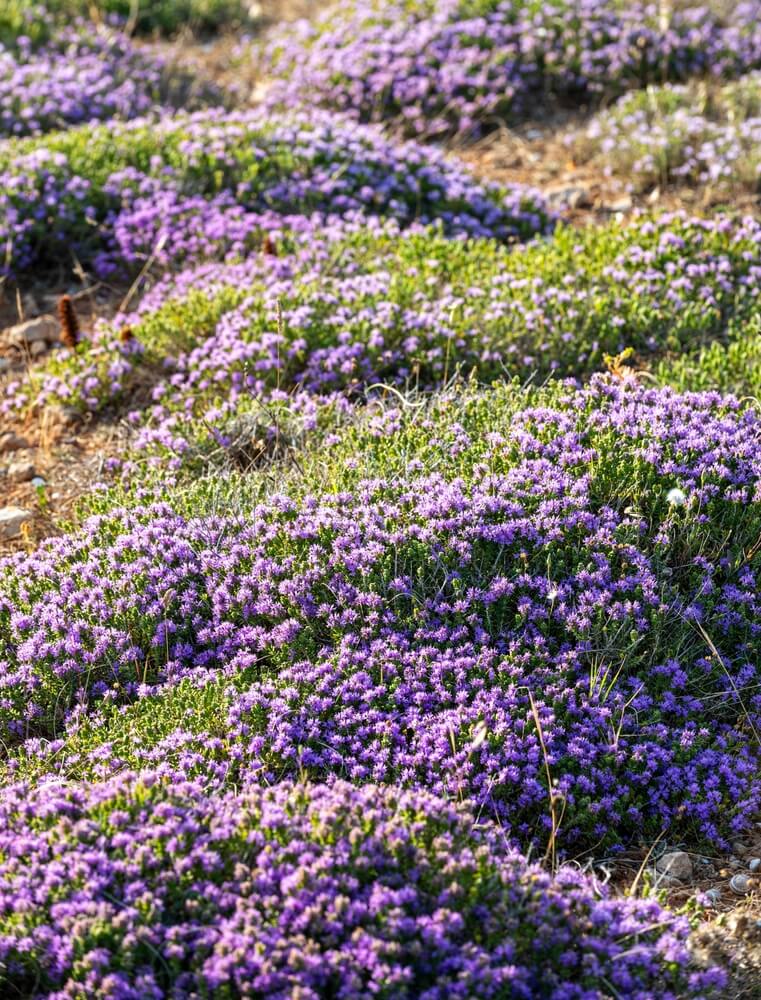
Imagine having a fragrant, walkable herb garden that releases bursts of Mediterranean aroma with every footstep. The tiny flowers create a pollinator paradise while providing you with endless seasoning for summer cooking.
- USDA Grow Zones: 4 through 9.
- Edible Parts: Leaves and flowers.
- Bloom Color / Form: Pink to purple. Forms small, clustered flowers.
- Wildlife Benefits: Native bees and butterflies visit for the yummy nectar.
Plant creeping thyme between stepping stones for the ultimate sensory experience. Each step releases a gentle rush of herbal fragrance! It makes your backyard feel like a garden therapy session.
8. Nasturtium (Tropaeolum majus)
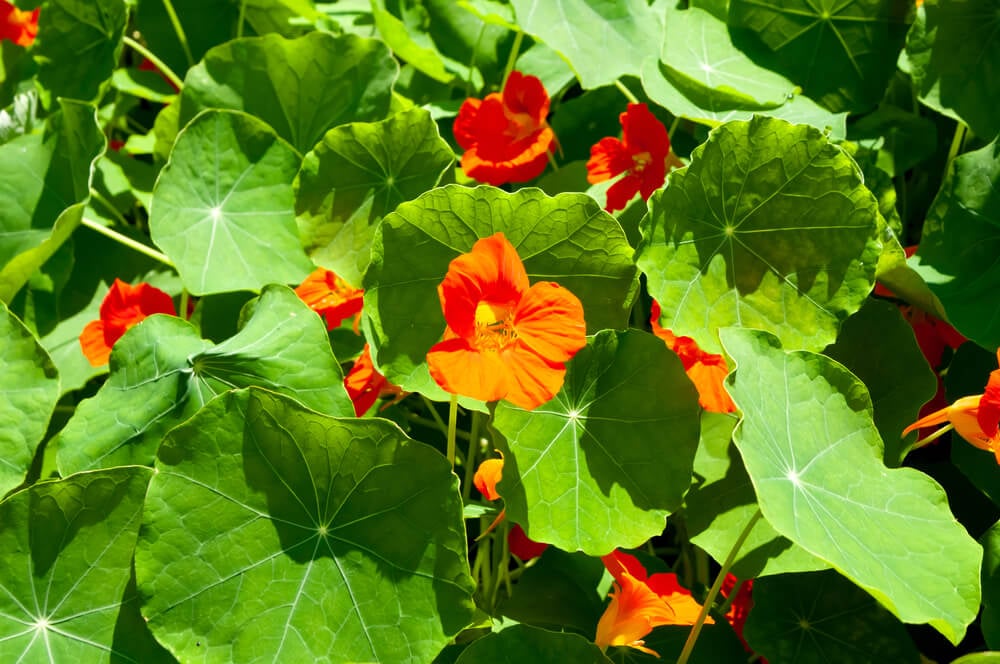
This trailing beauty serves up three courses. Peppery leaves that add zip to salads, vibrant edible flowers for garnish, and green seed pods that make excellent caper substitutes. Plus, it naturally deters garden pests while attracting beneficial insects.
- USDA Grow Zones: 9 through 11 as perennial, annual elsewhere.
- Edible Parts: Leaves, flowers, and seeds (“poor man’s capers”).
- Bloom Color / Form: Bright red, orange, or yellow funnel-shaped flowers.
- Wildlife Benefits: Attracts bees, hummingbirds, and predatory insects that help control pests.
Nasturtiums are nature’s companion planters. They’ll happily scramble up your tomato cages while deterring aphids and cucumber beetles from your vegetable garden.
Read More – Growing Delicious Butternut Squash From Seed – An All-In-One Guide!
9. Chamomile (Chamaemelum nobile, Roman type)
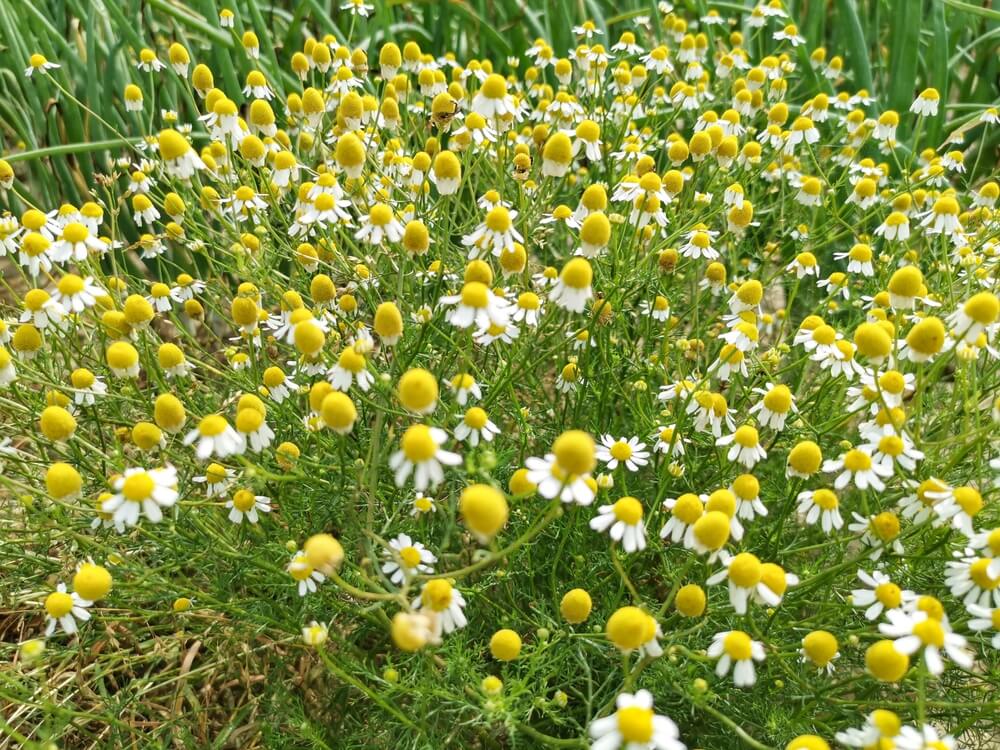
Known as “lawn chamomile,” this soft, apple-scented ground cover can withstand light foot traffic while producing tiny daisy flowers. It’s also perfect for brewing a relaxing, homemade tea. It’s like having a spa treatment growing in your yard.
- USDA Grow Zones: 4 through 9.
- Edible Parts: Flowers (used in tea).
- Bloom Color / Form: White, daisy-like flowers with yellow centers.
- Wildlife Benefits: Attracts beneficial insects. Flowers provide food for pollinators.
The ancient Egyptians called chamomile “ground apple” for its sweet, honey-like scent. Release this fragrance by mowing your chamomile lawn occasionally for a peaceful aromatherapy experience.
10. Mint (Mentha spp.)
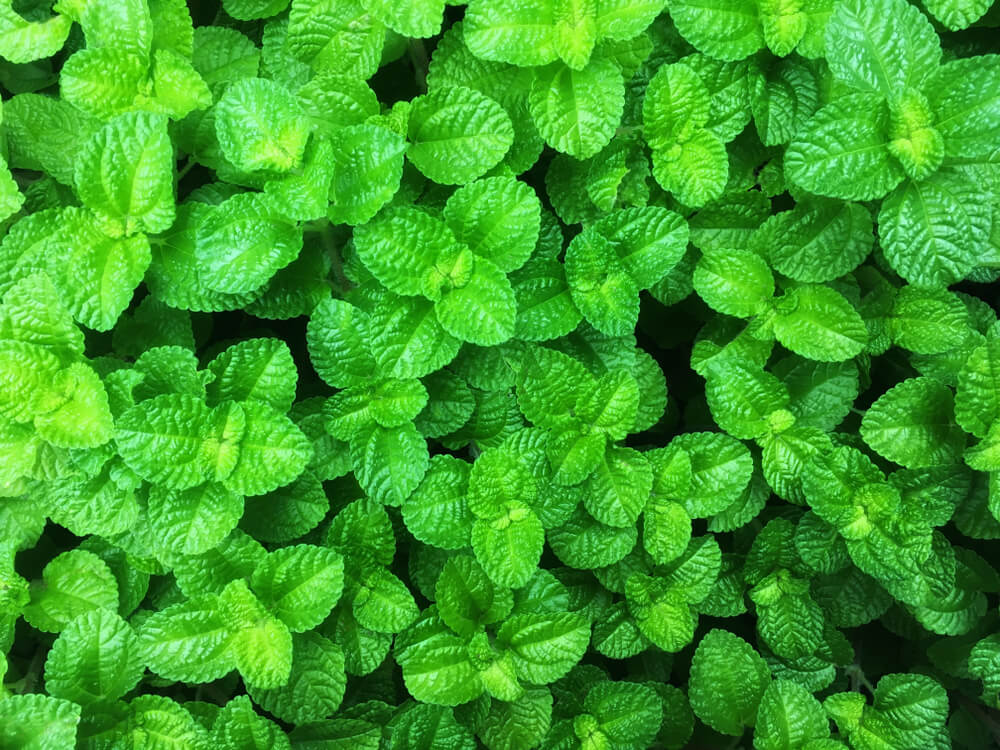
The ultimate double-edged sword of groundcovers! Mint will eagerly colonize any space you give it (and some you don’t), but rewards your vigilance with aromatic leaves perfect for mojitos, teas, and Middle Eastern dishes. Containment is key unless you want a mint empire.
- USDA Grow Zones: 4 through 9.
- Edible Parts: Leaves.
- Bloom Color / Form: Purple, pink, or white spikes of small flowers.
- Wildlife Benefits: Flowers attract bees and butterflies. The dense mats provide a habitat for insects.
Savvy gardeners plant mint in buried containers or dedicated “mint zones” because once it escapes, your biggest challenge will be finding plants that aren’t mint.
Read More – 10 Beautiful Plants To Grow Against Your Fence – From Edibles To Flowers!
11. Oregano (Origanum vulgare)
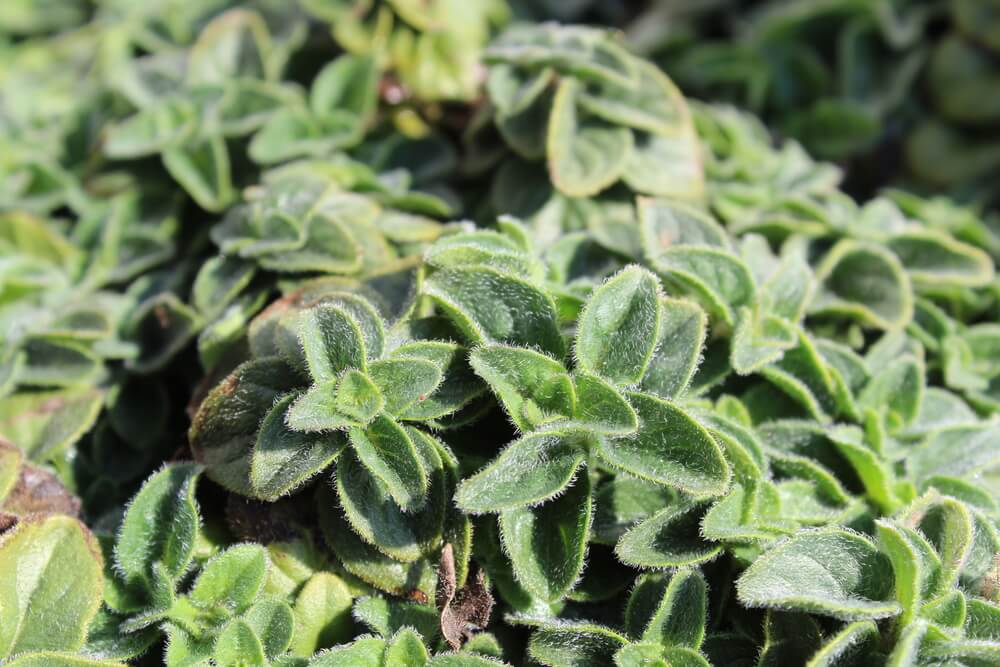
This Mediterranean native forms dense, low mats that smell like pizza every time you brush against them. The slight white or pink flowers buzz with bee activity, and you’ll have enough oregano to supply a classic, wood-fired pizzeria restaurant.
- USDA Grow Zones: 5 through 9.
- Edible Parts: Leaves.
- Bloom Color / Form: Pink and purple flower clusters. Tightly-packed.
- Wildlife Benefits: Attracts butterflies, bumblebees, honey bees, solitary bees, and other pollinators.
Here’s our best oregano secret. The flavor intensifies just before the plant flowers! Always let the oregano buds begin to form, then harvest soon after for the best flavor.
12. Wild Strawberry (Fragaria vesca)
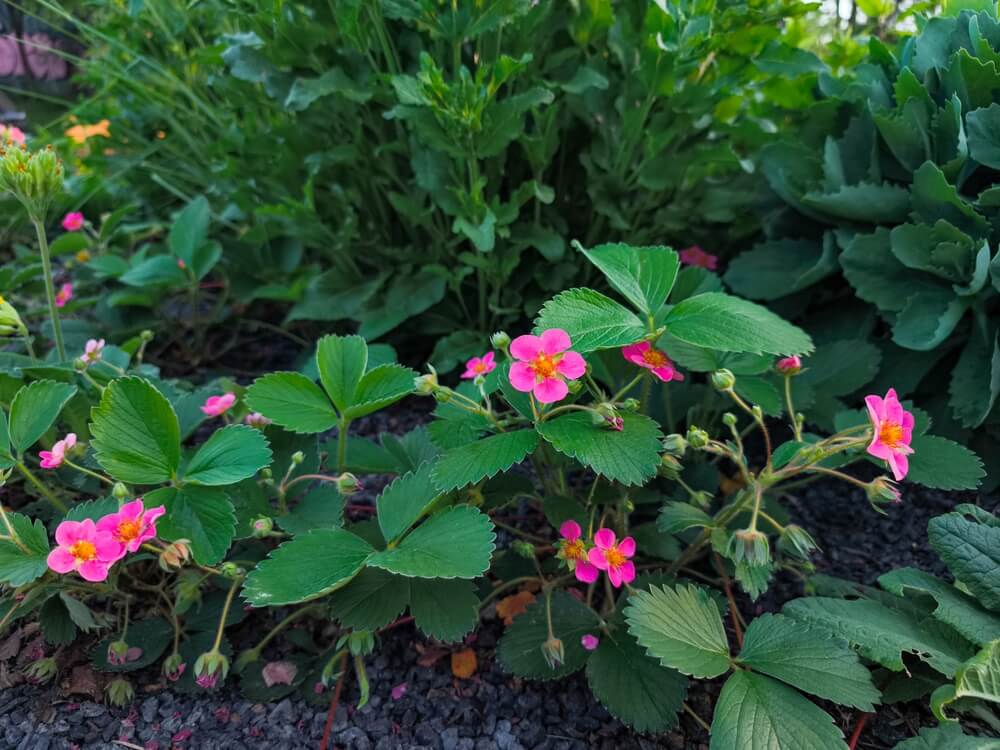
Forget the grocery store giants. These diminutive berries pack concentrated strawberry flavor into tiny packages, while the plants create an attractive, spreading ground cover with classic three-leaflet foliage and sweet white flowers.
- USDA Grow Zones: 4 through 9.
- Edible Parts: Fruits and young leaves (tea).
- Bloom Color / Form: White, five-petaled flowers in spring.
- Wildlife Benefits: Fruits feed birds and small mammals. Flowers support pollinators.
Wild strawberries are the original “eat the rainbow.” Their intense flavor makes one tiny berry worth ten supermarket strawberries, making it perfect for garnishing desserts with a profound impact.
Read More – Five Trees With Yummy Edible Leaves You Can Grow Yourself!
13. New Zealand Spinach (Tetragonia tetragonioides)
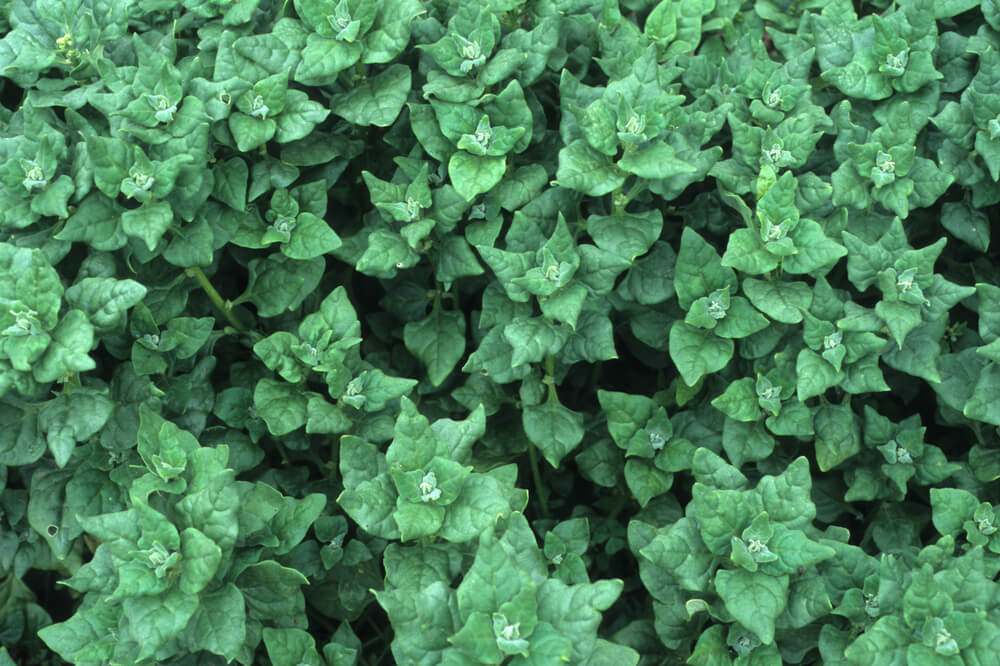
When regular spinach bolts in summer heat, this tough annual keeps producing tender, triangular leaves that cook up just like the real thing. It’s particularly valuable in hot climates where cool-season greens struggle.
- USDA Grow Zones: 9 through 11 as perennial, annual elsewhere.
- Edible Parts: Leaves (cooked).
- Bloom Color / Form: Small, yellow-green star-like flowers.
- Wildlife Benefits: Flowers attract pollinators, and dense growth shades the soil, preventing erosion.
Captain Cook’s crew survived on New Zealand spinach during their voyages in the Pacific, among other fresh greens. (They wanted to prevent scurvy!) It’s loaded with vitamin C and continues to produce even in brutal summer heat, when regular spinach has given up the ghost.
14. Lemon Balm (Melissa officinalis)
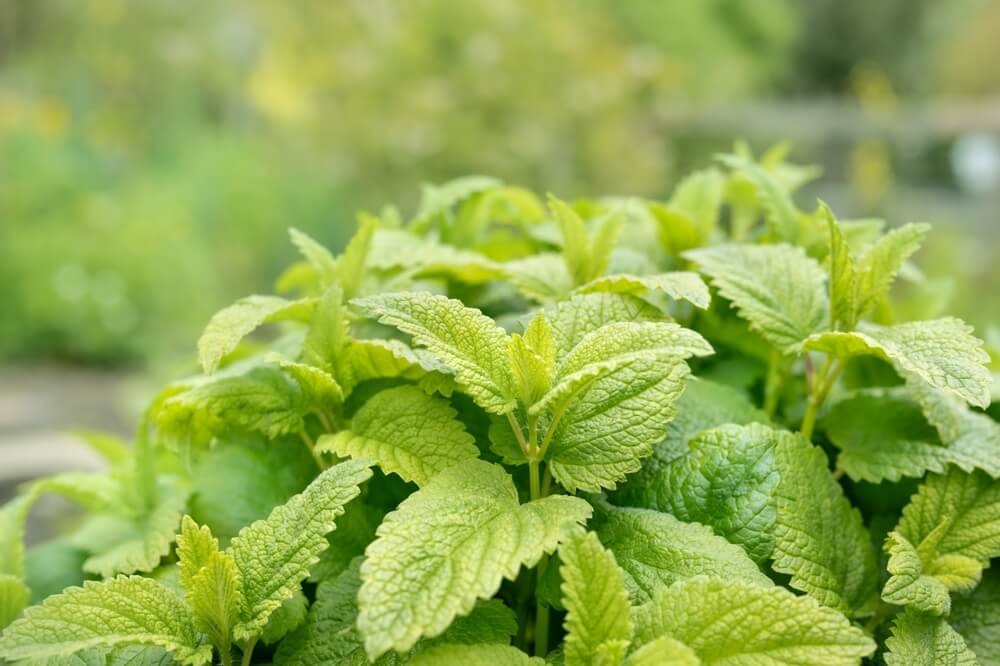
This gentle spreader releases a fragrant, lemony scent with the slightest touch, featuring leaves that are perfect for adding a soothing herbal tinge to teas or brightening the flavor of summer drinks. Bees find it irresistible, and it thrives in partial shade.
- USDA Grow Zones: 4 through 9.
- Edible Parts: Leaves.
- Bloom Color / Form: Small white to pale yellow flowers.
- Wildlife Benefits: Flowers attract bees. Aromatic foliage may deter some pests.
Medieval monasteries referred to lemon balm as “the scholar’s herb” because it was famous for improving memory and concentration.
Read More – 16 Long-Lasting Houseplants That Can Live For Up To 100 Years Or More!
15. Corsican Mint (Mentha requienii)
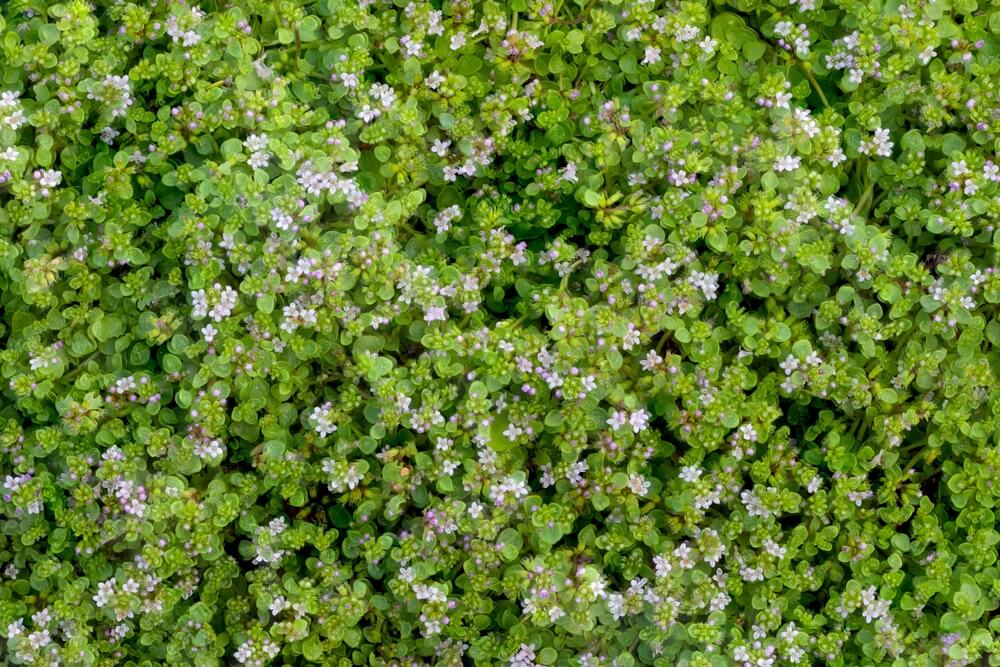
The fairy of the mint world, this tiny groundcover forms impossibly delicate carpets between stepping stones, releasing intense minty fragrance underfoot. Gourmet cooks prize the aromatic leaves for use in desserts and the famous Crème de Menthe liqueur.
- USDA Grow Zones: 6 through 9.
- Edible Parts: Leaves.
- Bloom Color / Form: Tiny lilac-purple flowers.
- Wildlife Benefits: Attracts bees. Aromatic mats repel some pests.
Corsican mint is so potent that just a few leaves can flavor an entire dessert. Think of it as the concentrated essence of mint in groundcover form.
16. Lowbush Blueberry (Vaccinium angustifolium)
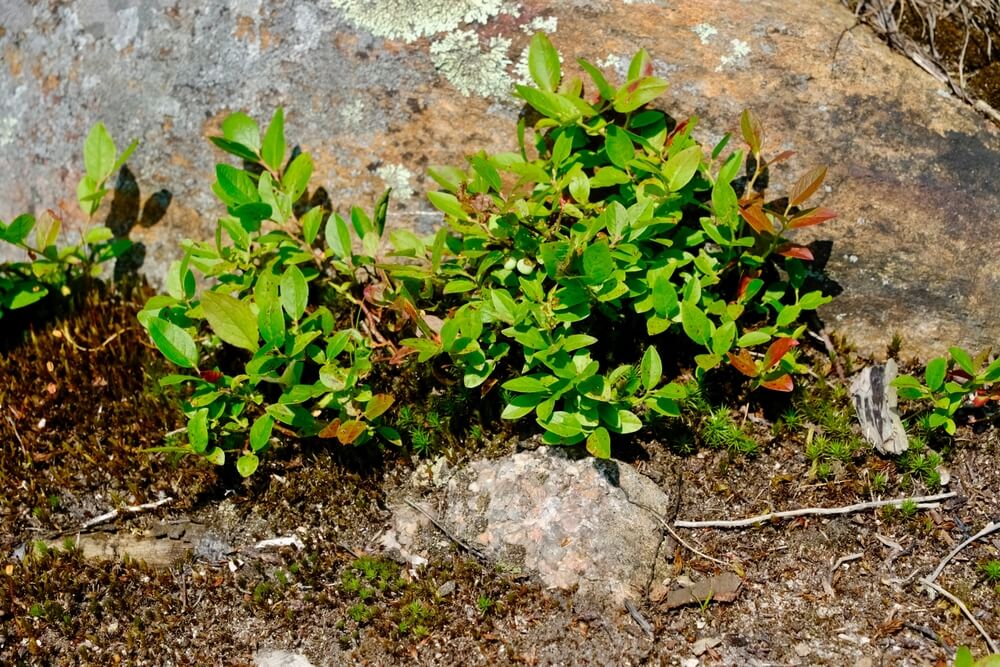
These spreading colonies deliver the authentic wild blueberry experience. Intensely flavored tiny berries put cultivated varieties to shame. The low shrubs offer stunning fall color and thrive in acidic soil, where other groundcovers often struggle.
- USDA Grow Zones: 3 through 7.
- Edible Parts: Berries.
- Bloom Color / Form: White to pink, bell-shaped flowers.
- Wildlife Benefits: Flowers feed pollinators. Berries serve as a welcome food source for songbirds and mammals.
Lowbush blueberries are the original “superfoods.” Their small size concentrates antioxidants to levels that make cultivated blueberries look slightly overrated!
Read More – 26 Beautiful Garden Themes And Ideas You Can Grow In Your Backyard Garden!
17. Creeping Raspberry (Rubus pentalobus / calycinoides)
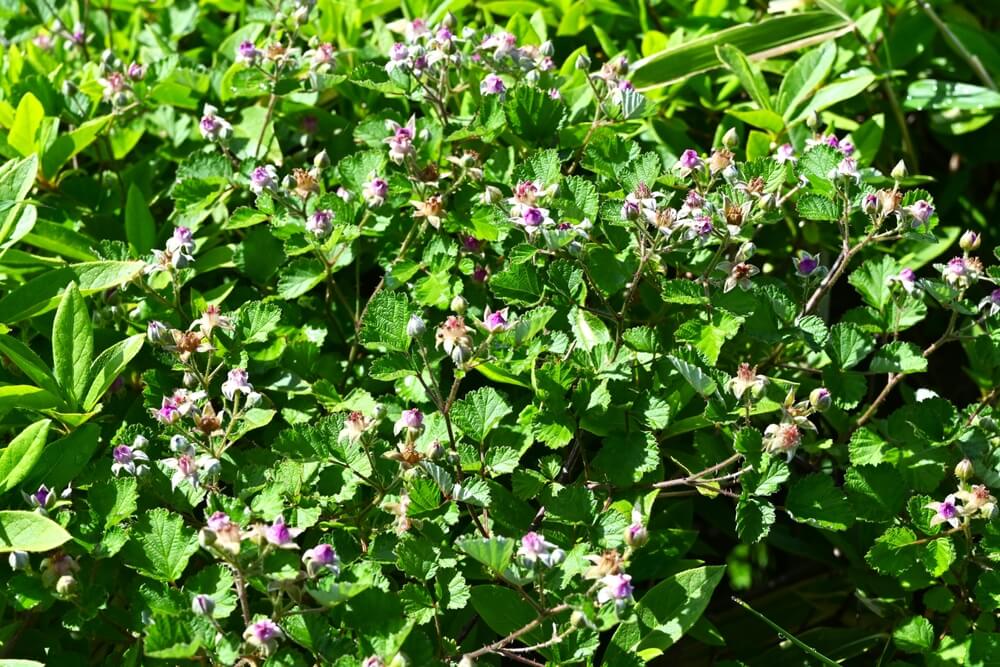
Tough as nails and nearly indestructible, this groundcover produces small, mild berries while creating dense mats that suppress even the most determined weeds. It’s perfect for difficult slopes and challenging sites.
- USDA Grow Zones: 6 through 9.
- Edible Parts: Fruits (mild flavor).
- Bloom Color / Form: White, rose-like flowers.
- Wildlife Benefits: Berries attract birds. The dense mats provide cover for insects and small garden creatures.
Creeping raspberries are perfect for homemade jams, jellies, and desserts. Its low-growing mat habit also makes it difficult for weeds to grow underneath.
18. Gotu Kola (Centella asiatica)
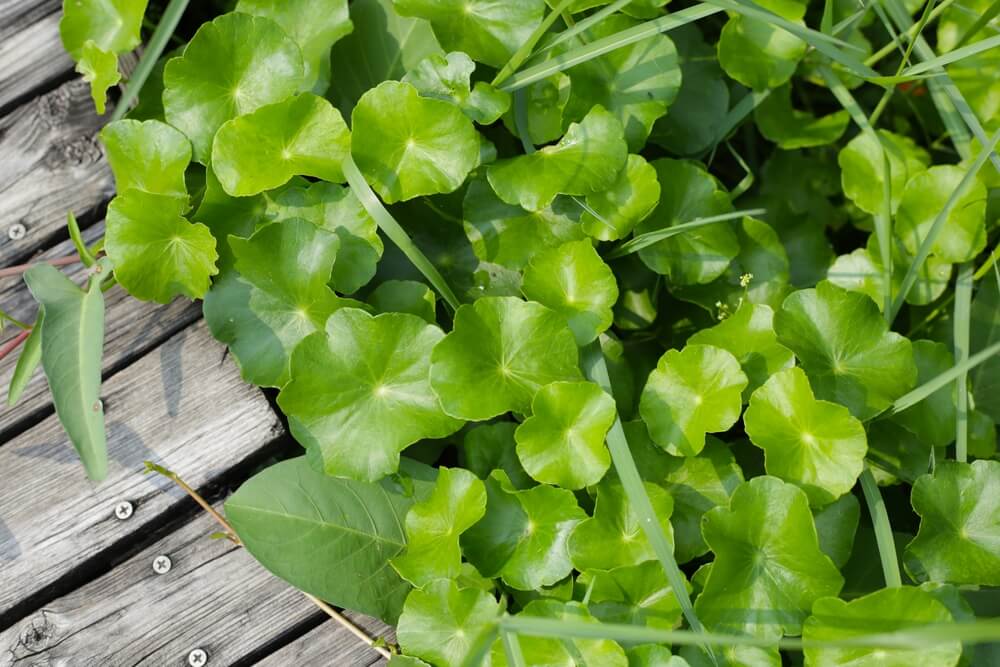
Gotu Kola is a little-known creeping herb that thrives in shady, damp spots. It produces kidney-shaped leaves that are staples in Thai and Vietnamese cuisine. It’s both a groundcover and a superfood! They pack boatloads of nutrients and have a medicinal history dating back centuries.
- USDA Grow Zones: 7 through 11.
- Edible Parts: Leaves.
- Bloom Color / Form: Small, inconspicuous pink to red flowers.
- Wildlife Benefits: The spreading mats stabilize the soil. Flowers provide nectar for small pollinators.
Few Americans know about Gotu kola! But this lovely plant has been renowned in traditional Asian cuisines and herbal practices for centuries.
Read More – How To Preserve Your Garden Herbs! 8 Proven Methods For Long-term Culinary Use!
Conclusion
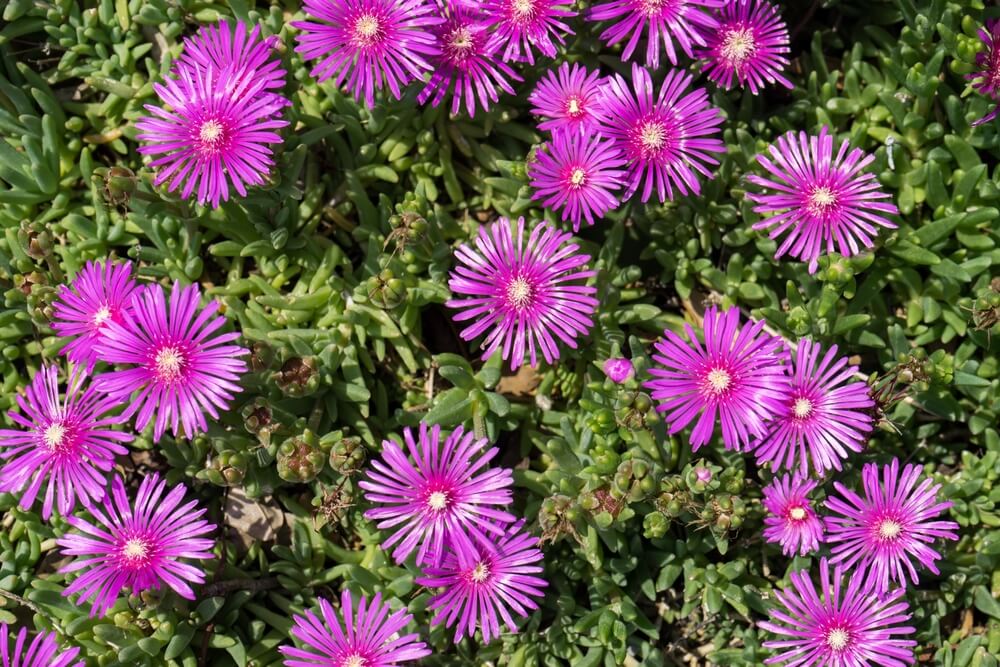
These edible groundcover crops prove you don’t have to choose between beautiful landscaping and delicious food. Why settle for grass you can’t eat when you could be harvesting dinner from your front yard? Your neighbors might be confused at first, but they’ll be asking for recipes once they taste what you’re growing underfoot!
What about you?
- Will you grow an alternative groundcover crop this year?
- Will you grow clover? Or something more exotic?
- Do you know of any other edible groundcover crops that we should add to our list?
Thanks for reading.
Have a great day!

